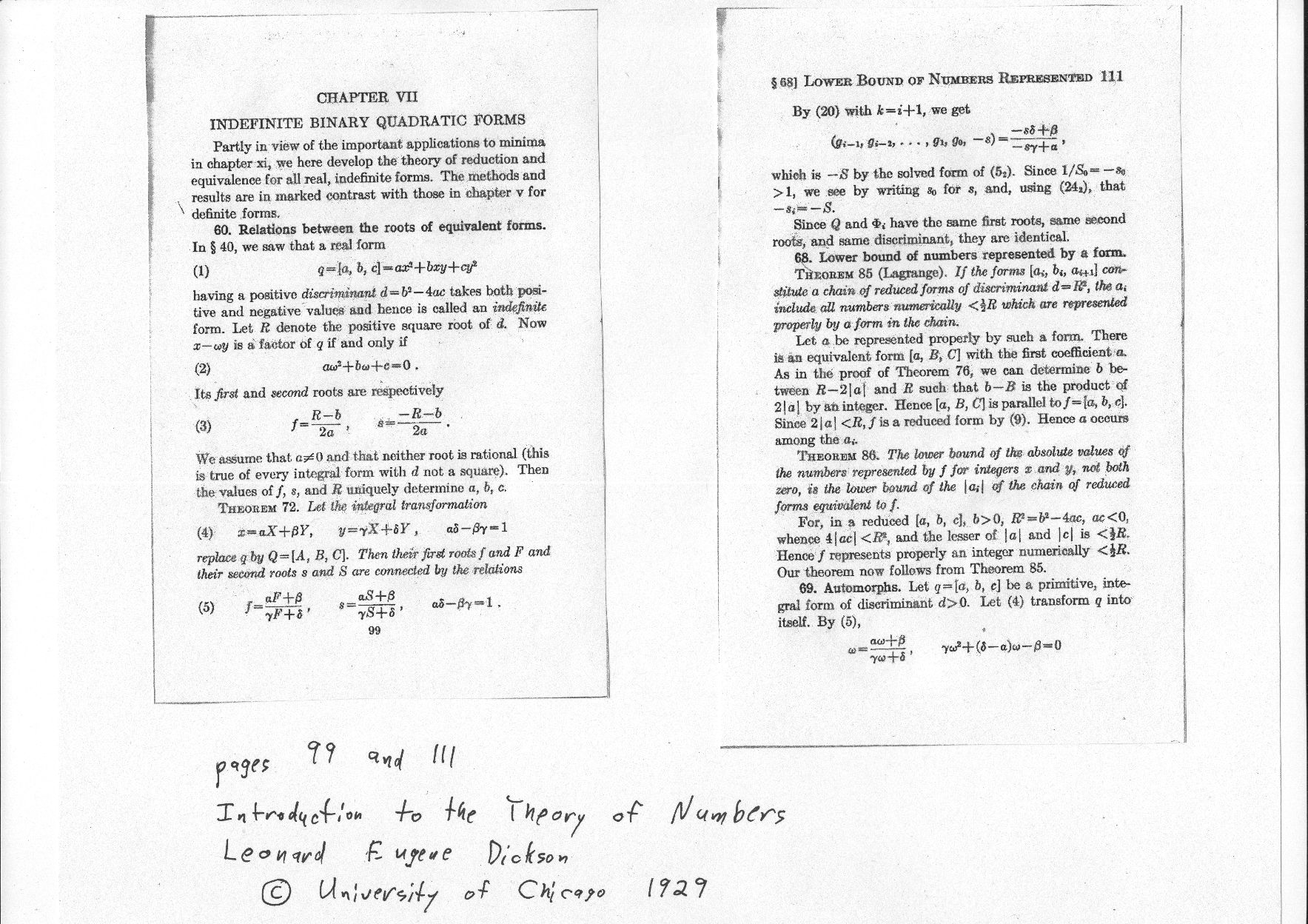The item you want is the neighbor method, a version of continued fractions. I learned this from Buell, Binary Quadratic Forms. It is also in a 1929 Introduction by Dickson, and a book by Matthews I've never seen. For a positive but not square discriminant, all primitively represented numbers with absolute value below $\frac{1}{2} \sqrt \Delta$ appear as coefficients (first or third) in the chain. There are usually a few more coefficients with slightly larger absolute values. Each triple in a cycle is a "reduced" indefinite form. A form $ax^2 + b xy + c y^2$ is reduced if and only if $ac<0$ and $b > |a+c| \; .$

